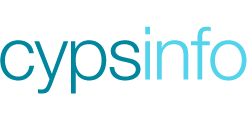The information contained in this page [and its sub-pages] is in the process of being updated. Thank you and please accept our apologies for any inconvenience caused.
Children and young people with SEN all have learning difficulties or disabilities that make it harder for them to learn than most children and young people of the same age. These children and young people may need extra or different help from that given to others, if only for a short while.
These additional needs can be divided into four areas of SEN:
Communicating and interacting –for example understanding spoken language, clarity of speech or appropriateness of interaction
Cognition and learning – for example, where children and young people learn at a slower pace than others their age or have difficulties with organisation and memory skills, or have a specific difficulty affecting one particular part of their learning such as in literacy or numeracy
Social, emotional and mental health difficulties – for example, where children and young people have difficulty in managing their relationships with other people, are withdrawn, or if they behave in ways that may hinder their and other children’s learning, or that have an impact on their health and wellbeing
Sensory and/or physical needs – for example, children and young people with visual and/or hearing impairments, or a physical need that means they must have additional ongoing support and equipment.
Of course many children and young people have SEN that covers more than one of these areas, they may have one area as a primary need, and others as secondary needs.
Disabilities
Some children with SEND may have a disability, this is described in law (the Equality Act 2010) as ‘a physical or mental impairment which has a long-term (a year or more) and substantial adverse effect on their ability to carry out normal day-to-day activities.’ This includes, for example, children with physical and medical needs like a hearing impairment, severe epilepsy etc, and also includes neurodiverse children eg those with autism.
Most children with SEND and disabilities of all types have their needs effectively met in mainstream schools, with their teaching team supported by the school SENDCo or Inclusion manager, working in partnership with their families. Resources and guidance to support early identification and intervention are available here (link to Early ID and SEND support page)
The SEND hubs are also available for informal advice to schools, settings and families on any aspect of SEND and inclusion without needing to make a formal referral. This includes advice on developing provision in schools, and advice around issues such as exclusion, part time provision, home education and SEND, and resolving disagreements around provision. For informal advice please contact NYSENDhubs@northyorks.gov.uk
Families should also be directed to the local offer (https://www.northyorks.gov.uk/send-local-offer).
School responsibilities
- The Equality Act requires that early years providers, schools, colleges, other educational settings and local authorities:
- Must make reasonable adjustments including the provision of support and auxiliary aid services (for example, tactile signage, symbol timetables, communication and radio aids) so that disabled children and young people are not disadvantaged compared with other children and young people. This duty is what is known as ‘anticipatory’ – schools must also consider in advance what disabled children and young people might need and factor this into their planning and budgeting decisions.
- Must make best endeavours to meet every child’s SEND, whether they have an EHCP or not. For more detailed information see (Early ID and intervention page)
Schools, colleges and settings must
- be curious about potential SEND and to identify this early through High Quality Teaching using appropriate assessment / screening tools (see pages for each area of SEND for details)
- intervene early to reduce the gap following Chapter 6 of the SEN Code of Practice and using High Quality Teaching interventions / differentiation / modifications (link to Early ID and SEND support page)
- work in partnership with young people and their families to maximise impact of any intervention
- document the impact of these interventions in order to evidence what further support might be required
- if, following initial assessment and intervention, the CYP’s needs prove to be persistent and school requires additional support to meet those needs, school should refer to the SEND hubs, with the consent of their families.
Local Authority responsibilities
Under the Children and Families Act 2014, the local authority must always think about how the child or young person can be supported to facilitate their development and to help them achieve the “best possible educational and other outcomes”.
In most cases this is achieved by their school or setting, when additional support is needed this can be obtained through the SEND hubs.
References/Links to Associated Information
North Yorkshire SEND - Hub Referral Form
SEND Hubs Handbook - Scarborough/Whitby/Ryedale
SEND Hubs Handbook - Harrogate/Ripon/Knaresborough/Craven
SEND Hubs Handbook - Hambleton/Richmondshire
Medical Education Service Request Form (Sept 2023)
Lone Working Risk Indicator Assessment
Statutory Guidance
Useful Downloads
NYCC Inclusion Newsletter - Spring 1 2002
NYCC Inclusion Newsletter - Spring 2 2022
NYCC Inclusion Newsletter - Summer 1 2022


